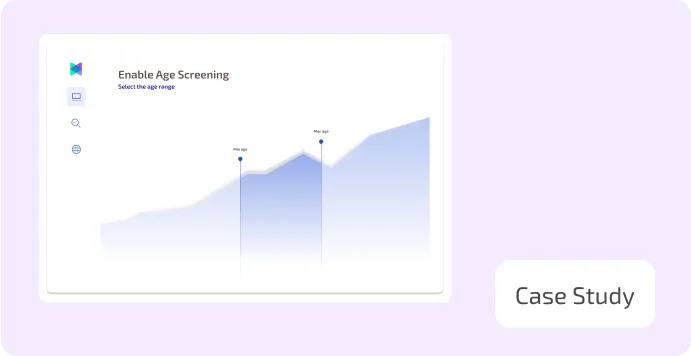.webp)
Published on
June 24, 2025
AML Name Screening for Risk Detection in Financial Compliance
.png)
Accelerate AML Compliance: Meet Regulatory Demands with 80% Less Setup Time
.svg)
.svg)
AML name screening is a key process in Anti-Money Laundering (AML) compliance where financial institutions check customer names against sanctions lists, watchlists, politically exposed persons (PEPs) lists, and adverse media sources to identify potential risks related to money laundering, fraud, or terrorist financing.
This process helps banks and businesses detect high-risk individuals or entities before onboarding them as customers or when they conduct financial transactions.
If a match is found, the institution conducts Enhanced Due Diligence (EDD) to confirm whether the person or entity is actually the one flagged and assess the level of risk. High-risk customers may be rejected, monitored closely, or reported to regulators.
Example:
XYZ Bank, a major financial institution, was onboarding a new corporate client, EastBridge Holdings Ltd., for an international business account.
Step-by-Step Breakdown of AML Name Screening:
1. Initial Name Screening
- During the customer onboarding process, XYZ Bank ran a routine name screening on EastBridge Holdings Ltd. and its directors.
- The sanctions screening system flagged a potential match with an individual on the EU Sanctions List.
2. Enhanced Due Diligence (EDD)
The compliance team investigated further and found that:
- The company’s CEO had the same name as a person listed under EU sanctions for involvement in Russian money laundering activities.
- The CEO’s passport details did not match the sanctioned individual, but additional checks revealed that he had used multiple identities in past financial dealings.
- Adverse media reports linked EastBridge Holdings Ltd. to suspicious real estate transactions in Dubai, possibly linked to laundering criminal proceeds.
3. Decision and Regulatory Reporting
- XYZ Bank refused to open an account for EastBridge Holdings Ltd. due to high AML risk.
- A Suspicious Activity Report (SAR) was filed with the relevant regulators.
- Authorities later confirmed that the company was involved in an international money laundering scheme.
Key Takeaways from the AML Name Screening Case:
- Name screening helps prevent financial institutions from doing business with criminals.
- False positives can occur, so Enhanced Due Diligence (EDD) is necessary.
- Rejecting high-risk customers protects banks from fines and reputational damage.
- Reporting suspicious matches to regulators helps fight financial crime.
Streamline Compliance: Achieve 80% Faster Setup for Fraud Prevention
.svg)
.svg)

How Aseel reduced onboarding time by more than 87% using FOCAL
Learn how FOCAL empowered Aseel to achieve new milestones.


Mastering Fraud Prevention: A Comprehensive Guide for KSA and MENA Businesses
51% of organizations fell victim to fraud in the last two years, don't be caught off guard, act proactively.


Featured blog posts

.png)
AML Name Screening for Risk Detection in Financial Compliance
Learn how AML name screening helps detect high-risk individuals by checking sanctions, watchlists, and adverse media to prevent financial crimes.
.webp)
.png)
AML Name Screening for Risk Detection in Financial Compliance
Learn how AML name screening helps detect high-risk individuals by checking sanctions, watchlists, and adverse media to prevent financial crimes.
.webp)
.png)
AML Name Screening for Risk Detection in Financial Compliance
Learn how AML name screening helps detect high-risk individuals by checking sanctions, watchlists, and adverse media to prevent financial crimes.
.webp)





AI-Driven Precision in Fraud Risk and AML Compliance



.svg)
.png)





.svg)

_FastestImplementation_Small-Business_GoLiveTime.png)

_HighPerformer_Small-Business_HighPerformer.png)
_Leader_Leader.png)



%20(1).webp)